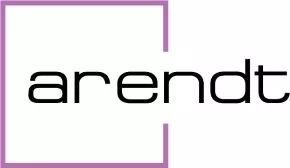- within Corporate/Commercial Law topic(s)
- within Corporate/Commercial Law, Food, Drugs, Healthcare, Life Sciences and Criminal Law topic(s)
After having reviewed the 2024 corporate sustainability reporting practices of listed companies, ESMA published the 2025 European Common Enforcement Priorities, which identify what preparers, auditors and national competent authorities should prioritise when preparing, auditing, and supervising the 2025 annual reports. This article highlights the key takeaways for Luxembourg companies.
Context
On 14 October 2025, the European Securities and Markets Authority (ESMA) published its annual Public Statement on the European Common Enforcement Priorities (ECEP) for the 2025 annual reports of issuers admitted to trading on the European Economic Area (EEA) regulated markets.1 The ECEP was accompanied by a report on the results of a fact-finding exercise on the 2024 corporate sustainability reporting practices under the European Sustainability Reporting Standards (ESRS).2
The ECEP package comes at a time of turmoil in the sustainability regulatory environment. In the context of the Omnibus reforms, on 13 October, the Legal Affairs Committee (JURI) of the EU Parliament reached an agreement on the compromise text of the "Omnibus I Content Directive",3 paving the way for final approval by the EU Parliament this week, and trilogue meetings possibly even by the end of the year. For Luxembourg preparers, this is a particularly significant development, as the implementation of CSRD into national law is expected to follow the directive's approval.
Earlier this year, the CSSF also conducted a similar review of the 2024 sustainability disclosures by Luxembourg issuers.4 It found that almost 60% of the issuers voluntarily prepared their 2024 sustainability disclosures following the ESRS to meet NFRD requirements, pending CSRD implementation. Together, the ESMA and CSSF findings provide valuable insights for Luxembourg preparers on priority areas and common pitfalls to consider in the first years of reporting.
Key takeaways from the 2024 fact-finding exercise
ESMA reviewed 91 issuers across 23 Member States, 66% already reporting under CSRD and 34% applying ESRS voluntarily. Considering the novelty of the exercise, ESMA judged the level of alignment of the IRO-1 disclosures with the objective of the Disclosure Requirement as relatively positive. While most companies described their material impacts, risks, and opportunities (IROs), some issuers relied on boilerplate language by merely replicating the scoring steps suggested in the EFRAG Implementation Guidance, instead of explaining which considerations specific to their entity have been factored into the assessment.
ESMA found that close to 80% of the sample provided some explanations on how they had set qualitative or quantitative thresholds for determining their material IROs. Stakeholder engagement and links to due diligence processes were commonly reported on, but often not with sufficient detail.
Roughly 70% disclosed entity-specific matters, though labelling was inconsistent. Most issuers included mapping tables and EU datapoints, but precision varied. As for assurance, ESMA found that two issuers received qualified opinions due to significant omissions. For four other issuers, auditors issued unqualified opinions but emphasised materiality concerns and missing material disclosures.
ESMA's findings are broadly consistent with the practices observed by the CSSF for Luxembourg preparers, reinforcing the value of these documents as benchmarking tools.
Priorities for the 2025 sustainability disclosures
Also considering the enduring level of uncertainty in the corporate sustainability reporting environment, ESMA decided to exceptionally carry forward two of the priorities from its ECEP 2024.5
For 2024 reports, preparers, auditors and supervising authorities were recommended to focus on the quality of the double materiality assessment (Priority 1), the scope and structure of the sustainability statement (Priority 2) and the EU Taxonomy disclosures (Priority 3). For 2025, only Priority 1 and Priority 2 have been confirmed. Given the recent amendment of the relevant EU Taxonomy rules in the context of the Omnibus reforms, acknowledging the changing regulatory environment, ESMA has not included specific recommendations on Taxonomy disclosures in the ECEP 2025.
As for materiality, ESMA recommended in particular that issues to:
- disclose input parameters (data sources, scope, assumptions),
- explain thresholds and criteria for material IROs,
- consider gross impacts before mitigation,
- integrate stakeholder views transparently,
- provide detailed results under ESRS 2 (SBM-3, IRO-2),
- use ESRS terminology and map IROs to relevant topics, and
- clearly separate material from non-material information.
Regarding the scope and structure of the sustainability statement, issuers must ensure alignment with financial reporting scope and clearly disclose any deviation from this approach, when permitted. ESMA also urged issuers to:
- cover material IROs across the value chain (within ESRS 1 limits),
- disclose limitations and explain scope or baseline changes, follow ESRS's four-part structure (General, Environmental, Social, Governance) as long as this does not limit access to clear information,
- use hyperlinks and reference Disclosure Requirements (e.g. "E2-5") for clarity and digital tagging, and
- ensure connectivity between sustainability and financial data for coherence and auditability.
What's next for Luxembourg companies
While CSRD and ESRS compliance remains voluntary in Luxembourg, the framework is evolving rapidly.
Wave 1 companies subject to NFRD can mitigate uncertainty by progressively aligning with ESRS requirements. The latest ESMA publications help entities focus on material aspects, streamline reporting efforts, and avoid common mistakes.
Non-NFRD companies may also benefit from referencing the ESRS or voluntary SME standards (VSME) to anticipate future requirements and leverage strategic opportunities
The content of this article is intended to provide a general guide to the subject matter. Specialist advice should be sought about your specific circumstances.


